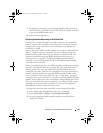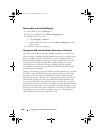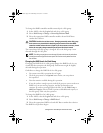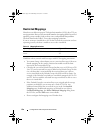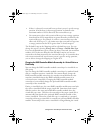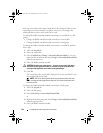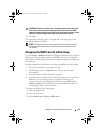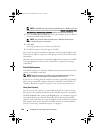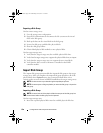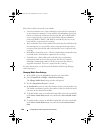
Configuration: Disk Groups and Virtual Disks 135
Storage partitioning is unavailable when:
• No valid host groups or hosts exist in the
Topology
pane on the
Mappings
tab.
• No host ports are defined for the host being included in the storage
partition.
• All mappings are defined.
NOTE: You can include a secondary virtual disk in a storage partition.
However, any hosts that are mapped to the secondary virtual disk has read-only
access until the virtual disk is promoted to a primary virtual disk, or the mirror
relationship is removed.
Storage partitioning topology is the collection of elements, such as Default
Group, host groups, hosts, and host ports shown as nodes in the Topology
pane of the Mappings tab in the AMW. For more information, see "Using the
Mappings Tab" on page 88.
If a storage partitioning topology is not defined, an informational dialog
appears each time you select the Mappings tab. You must define the storage
partitioning topology before you define the actual storage partition.
Disk Group and Virtual Disk Expansion
Adding free capacity to a disk group is achieved by adding unconfigured
capacity on the array to the disk group. Data is accessible on disk groups,
virtual disks, and physical disks throughout the entire modification operation.
The additional free capacity can then be used to perform a virtual disk
expansion on a standard or snapshot repository virtual disk.
Disk Group Expansion
1
In the AMW, select the
Logical
tab.
2
Select a disk group.
3
Select
Disk Group
Add Free Capacity (Physical Disks)
.
The
Add Free Capacity
window is displayed. Based on the RAID level, and
the enclosure loss protection of the current disk group, a list of unassigned
physical disks appears.
book.book Page 135 Wednesday, June 8, 2011 5:01 PM



